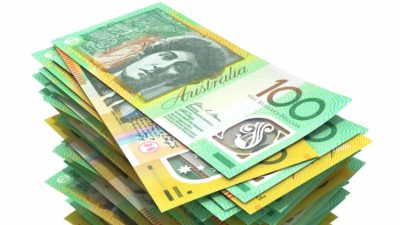Ever heard of the 'miracle of compound interest' when it comes to investment?
Legend has it that Albert Einstein once declared: "Compound interest is the eighth wonder of the world. He who understands it, earns it; he who doesn't, pays it".
Let's explore this further, and we'll also take some tips from a professional financial advisor on how to leverage compound interest across a range of investment asset classes.
What is compound interest?
Compound interest is basically earning interest on interest. It means you keep reinvesting the returns you make on your investments to make the next set of returns even higher.
Raj Pradhan, an advisor at Findex, says:
Harnessing compounding interest to grow your retirement savings could open the door to a world of financial possibilities and see your superannuation balance and investment returns multiply over time.
Pradhan explains compound interest as follows:
… suppose you invest $10,000 in an asset that generates a 7% annual return. In the first year, you earn $700 in interest, bringing your total investment value to $10,700.
In the second year, the 7% return is applied to the new total ($10,700), resulting in a higher interest amount.
Over time, this compounding effect can help accelerate wealth creation and, subsequently, enhance your retirement fund.
Pradhan says an effective compound interest investment strategy begun at a young age reduces the need to add more money to your investments to achieve significant growth.
He says this makes the goal of building wealth more efficient, which is good news for most Australian investors who tend to have longer-term goals.
According to a recent Findex survey, planning for retirement (54%) and building wealth (53%) are the top two reasons Australians invest regardless of the investment asset classes they choose.
However, time is a key factor in maximising investment returns from compound interest.
Starting young will mean someone on an average wage can still amass good savings because they're leveraging the benefit of time.
But if you can, ploughing spare money into your investments along the way will turbocharge the compound interest effect.
5 investment strategies using compound interest
Here are Pradhan's five investment strategies to help you leverage the power of compound interest.
1. Regularly contribute to your superannuation fund
Pradhan says one of the most significant applications of compounding interest is in building retirement savings via superannuation.
He says:
Imagine starting to invest in your superannuation fund early in your career. By consistently contributing and reinvesting earnings, you harness the power of compounding interest to grow your future nest egg.
For example, let's consider a scenario where you start investing $10,000 in your superannuation fund at age 25. Assuming an average annual return of 7% compounded annually, by the time you reach age 65, your investment could potentially grow to over $150,000.
2. Reinvest dividends earned from ASX shares or managed funds
Investing in a diverse range of quality ASX shares or international stocks can provide opportunities for capital appreciation and dividend reinvestment, Pradhan says.
Most ASX dividend shares offer dividend reinvestment plans (DRPs), which makes reinvestment an automatic process. The company will simply use your dividends to buy more shares for you.
Pradhan also says choosing professionally managed funds that reinvest dividends and distributions can compound investment returns over time.
3. Allocate funds to other asset classes to diversify
Besides ASX shares, Pradhan suggests investing in other assets like property or bonds to leverage compound growth and achieve diversification, which lowers risk.
He says: "Utilising leverage through property investment can amplify compound returns through rental income reinvestment and property value appreciation."
Check out the returns from shares vs. property over a 10-year period here.
4. Open a high-interest savings account
Pradhan recommends leaving earnings in your high-interest savings account so they can compound for the long term.
According to RateCity, the highest interest rate available in the marketplace today is 5.75%. That's well above the current inflation rate of 3.6%.
5. Prioritise low-cost and tax-efficient investments
Pradhan points out that minimising expenses and taxes will allow more capital to compound efficiently.
In The Fool's Education Centre, you can learn about many low-cost investment options, such as index funds. We also recently profiled the 10 cheapest ASX ETFs on the market today.
In terms of tax efficiency, franking credits are a huge tax benefit for ASX shares investors.
You can also earn yourself a helpful tax deduction by contributing extra funds to superannuation each year. Just make sure you don't exceed the threshold for concessional (pre-tax) personal contributions.
For FY24, the concessional contributions cap is $27,500. This includes your employer's Superannuation Guarantee payments, any salary sacrifice amounts you've organised with your boss, and any personal contributions you make into your superannuation fund directly. In FY25, the cap moves up to $30,000.
Here are 4 other ways to get money into your superannuation before 30 June.








